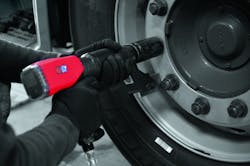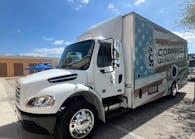Most technicians, regardless of the specialty or industry, need and/or currently utilize some form of torque tool. Simply put, torque is the amount of tightening force applied to a fastener. Similarly, for the purpose of this article, we consider a torque tool to be any tool that applies torque to fasteners.
This broad category is important because it ensures that fasteners are attached securely and component parts are properly seated and tightened. It is important that technicians use the right amount of force when tightening component parts. Too much force can damage the fasteners and component parts. Too little force gives fasteners a chance to back out or sheer off, resulting in potentially catastrophic failure. Quality tools that accurately measure the amount of torque being applied are a must-have for any technician.
Types of torque tools
Here is a brief overview of the different torque tools currently available.
- Mechanical/ Click torque wrenches – This is one of the most basic and common types of torque wrench. The wrench has an audible click when it reaches its set torque value. This is a type of manual torque tool.
- Digital/Electric torque wrench – These wrenches have a similar use to mechanical wrenches, but offer a digital readout that helps improve accuracy. These wrenches are also manual torque tools.
- Pneumatic torque wrench/ Nutrunners – The torque output is adjusted by controlling the air pressure. Nutrunners are often used in situations where the tightness of the screws and bolts is important, because users can measure the torque applied to the fastener to match it to the specs of a particular application, says Eva Marie, global brand communications manager for Chicago Pneumatic.
Chicago Pneumatic offers a variety of torque tools, including screwdrivers, nutrunners and pneumatic and hydraulic torque wrenches.
- Hydraulic torque wrench – This wrench offers improved torque capabilities and is typically used in industrial applications for very high load bolting.
- Torque testers – This quality control device is used to test and calibrate torque tools.
- Torque meters – A torque meter measures and records the torque on a rotating system. This tool can turn any square drive hand tool into three torque tools to measure inch, foot and Nm scales, says Vince Carlson, sales and marketing manager at Digitool Solutions.
Digitool Solutions manufactures and designed professional torque products including electric torque wrenches, torque angle meters, calibration equipment and more.
- Screwdrivers – These apply torque to screws. Screwdrivers are available as hand tools or as pneumatic or power tools, depending on the application they are needed for.
- Impact Wrench - A socket wrench power tool designed to deliver a high torque output with minimal user exertion. These tools are mainly used for dismantling nuts because they do not deliver enough accuracy for bolting.
The correct tool for the application
When using torque tools, accuracy is a major concern. Each vehicle component has different torque specification set by the manufacturer, which must be respected when servicing the vehicle.
Because it is important that torque tools are highly accurate and able to match manufacturer specifications, there has been a shift from analog to digital torque measurements. Analog tools, which fall under the mechanical torque wrench category, typically have a scale that features the range or capacity for that tool. Digital tools offer advanced technology that allows users to store data, measure in multiple scales, provide more accurate measurements and eliminate some operator error when applying torque. Digital tools can also offer built-in diagnostics that prevent the user from operating the tool if the tool isn’t functioning correctly.
“Analog tools are easy to operate, require minimal maintenance and tend to be slightly more durable,” Digtool’s Carlson says. “[But], they cannot store data, are less accurate and can easily over- or under-torque a set torque value.”
He explains that analog tools are still widely used in some markets, but for applications where torque accuracy is critical, digital torque tools are better suited.
“We are constantly innovating to develop high quality products that deliver higher power, but are easy to use,” adds Chicago Pneumatic’s Marie. These higher power solutions are suitable for heavy vehicle maintenance or high load applications such as truck wheel tire change. Pneumatic torque tools are more expensive than manual tools, so if the technician is mainly using the tool for light vehicle maintenance applications, a digital torque wrench may be more suitable.
Effective selling
There are hundreds of applications that require torque, from engines to tires, so odds are, your customers will need torque tools. They key information to ask your customer is, ‘What applications is the tool going to be used for, and what is the torque range needed for the application?’
Find out what torque solutions your customers are currently using, and what issues they are facing with those tools, suggests Chicago Pneumatic’s Marie. Understanding their current pains will help you suggest tools that are a better fit for their needs.
“If the torque requirement is high and tolerances are important, then the customer should look at tools that have been tested to industry standards, [such as] ASME, ISO and NIST specifications,” adds Digitool’s Carlson.
Other points customers should consider is the tool performance (speed and accuracy), operator comfort, performance-to-weight ratio, balance in the hand and durability. These factors will vary based on customer application and preference, so understanding what problems your customer is currently having will help you suggest torque tools that offer the features they are looking for.
“The best way to sell a torque tool is to understand how it operates…and physically show the customer how to use it. This is even more important with the new digital technology being offered to the market,” says Carlson.
“Displays or ‘try me’ corners where users can try the tools with simulator benches are very useful because end users can experience for themselves how a tool performs in ‘real’ situations,” adds Chicago Pneumatic’s Marie.
She also notes that when physical demonstrations aren’t practical, videos are a useful tool that allows techs to see tools in action and help them understand how they can be used in different applications.
Because torque tools are precision tools, Marie suggests storing them in protective cases while in transit. Improper storage or handling can affect calibration. To ensure correct calibration, Chicago Pneumatic recommends calibrating torque tools about once a year, although that guideline varies by application and frequency of use.
In addition to stocking a variety of torque tools on the truck, distributors should also consider stocking accessories such as additional bits for screwdrivers, drive shafts and reducers, sockets and stud cleaners.
“The most commonly asked for [torque tool accessories are] extensions in various lengths and socket adapters. Most standard torque wrenches have a male square drive [so distributors should have] sockets and accessories,” says Carlson.
Marie adds that safety accessories including gloves, glasses and ear protectors are also needed when operating pneumatic torque wrenches, and are good items to keep in stock.
In conclusion
Torque tools are a broad category that nearly every technician needs and uses. Torque requirements vary based on the application needs, and being knowledgeable about this product category will help you recommend tools that fit your customers quality and calibration requirements. Understanding the different torque tools and recommending the right tool for the application will make establish you as the go-to distributor for this product category and help you stand out in a competitive market.



